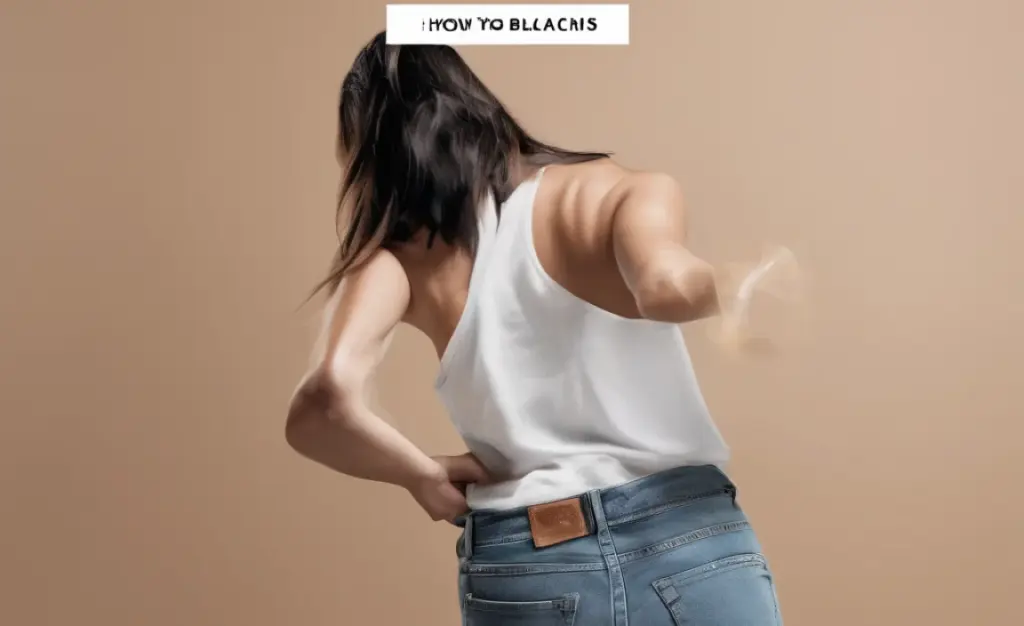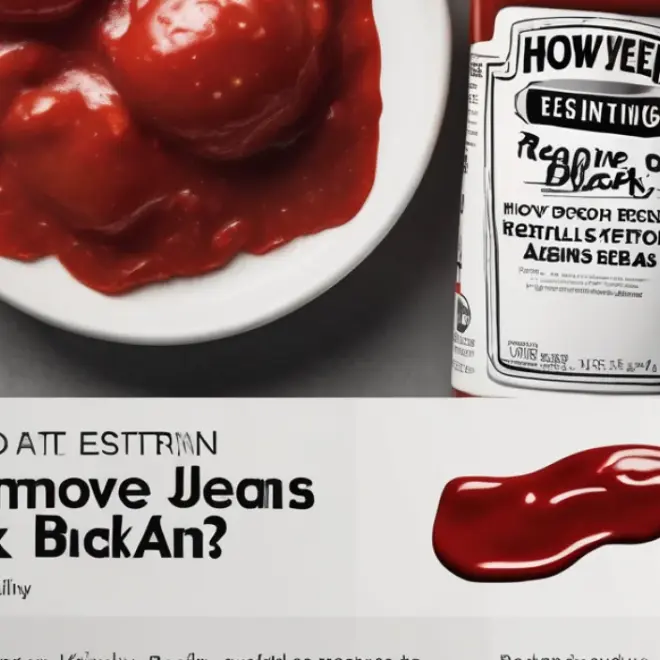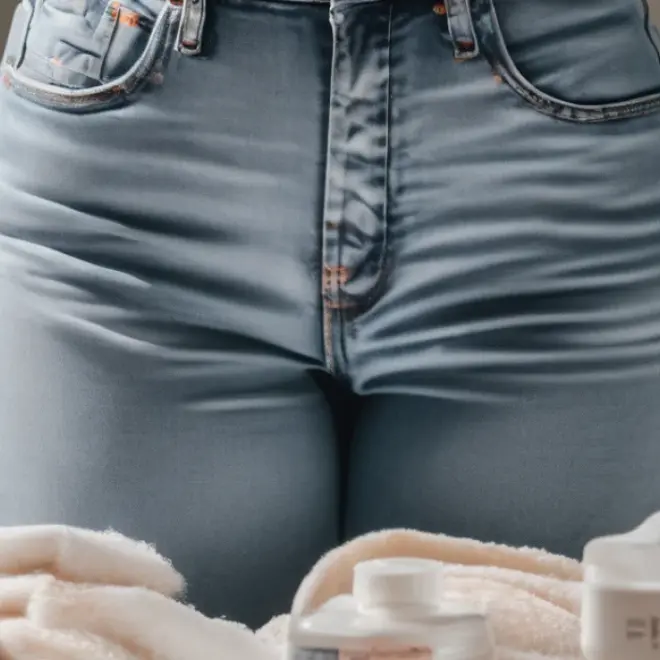Quick Summary: Effectively remove soda stains from black jeans using common household items like dish soap and water, acting fast to rinse and pre-treat the affected area before washing. This guide offers proven, effortless methods to restore your favorite denim without a hitch.
How to Successfully Remove Soda from Black Jeans: Proven, Effortless Methods
That moment you realize you’ve just spilled soda on your favorite black jeans can be a sinking feeling. Whether it’s a splash from a casual outing or a larger accident, soda stains on dark denim can seem daunting to tackle. The sugary residue can leave a sticky mark, and the dark color of the jeans might magnify any remaining discoloration or ring. But don’t worry! With the right approach and a few common household items, you can banish those soda spots and have your black jeans looking as good as new.
This guide will walk you through simple, effective techniques to lift soda stains. We’ll cover everything from immediate first aid for fresh spills to more stubborn, set-in marks. You’ll learn which solutions work best and how to apply them gently to protect your jeans’ fabric and color. Get ready to say goodbye to sticky surprises and hello to spotless denim!
Understanding Soda Stains on Black Jeans
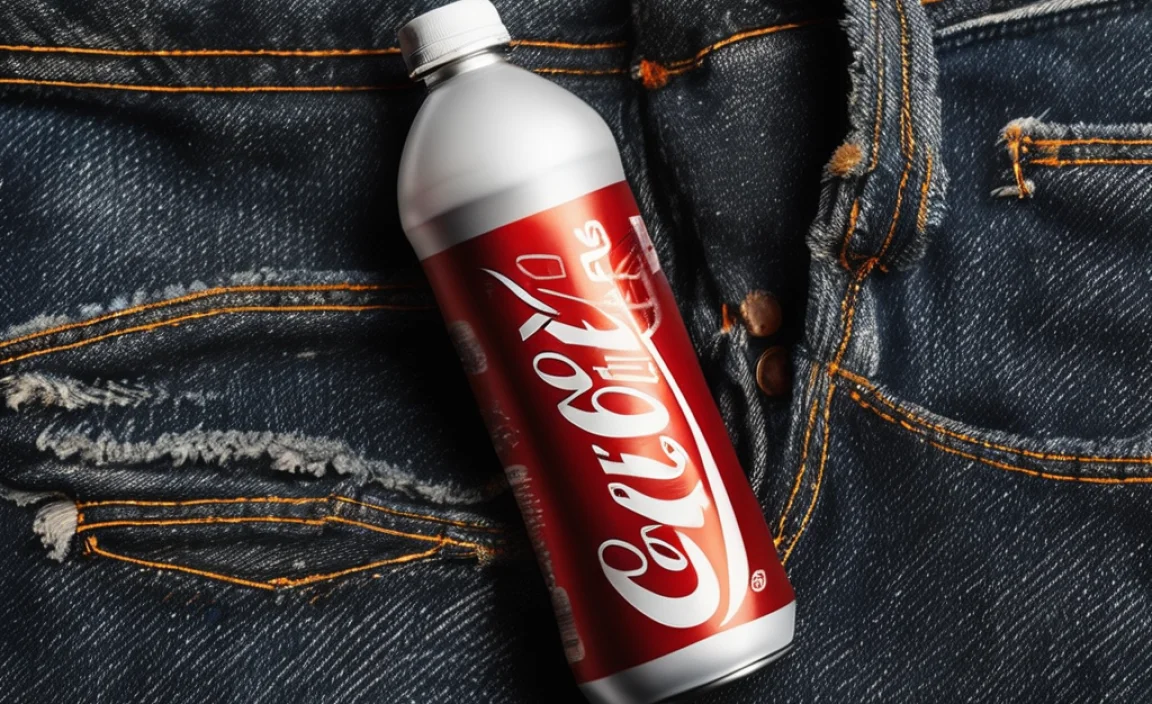
Soda, whether it’s cola, lemon-lime, or any other fizzy beverage, contains sugars and often coloring agents. When spilled on fabric, especially dark denim, these components can bond with the fibers. The sugar can create a sticky residue that attracts dirt, leading to dullness or a visible patch. The dyes, particularly in dark sodas like cola or root beer, can sometimes leave a faint tint or ring if not properly removed.
Black jeans are particular about stain removal. You want to avoid using harsh chemicals that could bleach the fabric or alter the deep black hue. The goal is to dissolve the sticky sugars and lift any lingering color without damaging the denim itself. The good news is that black denim also has a slight advantage: it can sometimes hide minor imperfections better than lighter colors, but a sticky soda ring is hard to conceal.
The Science Behind Stain Removal
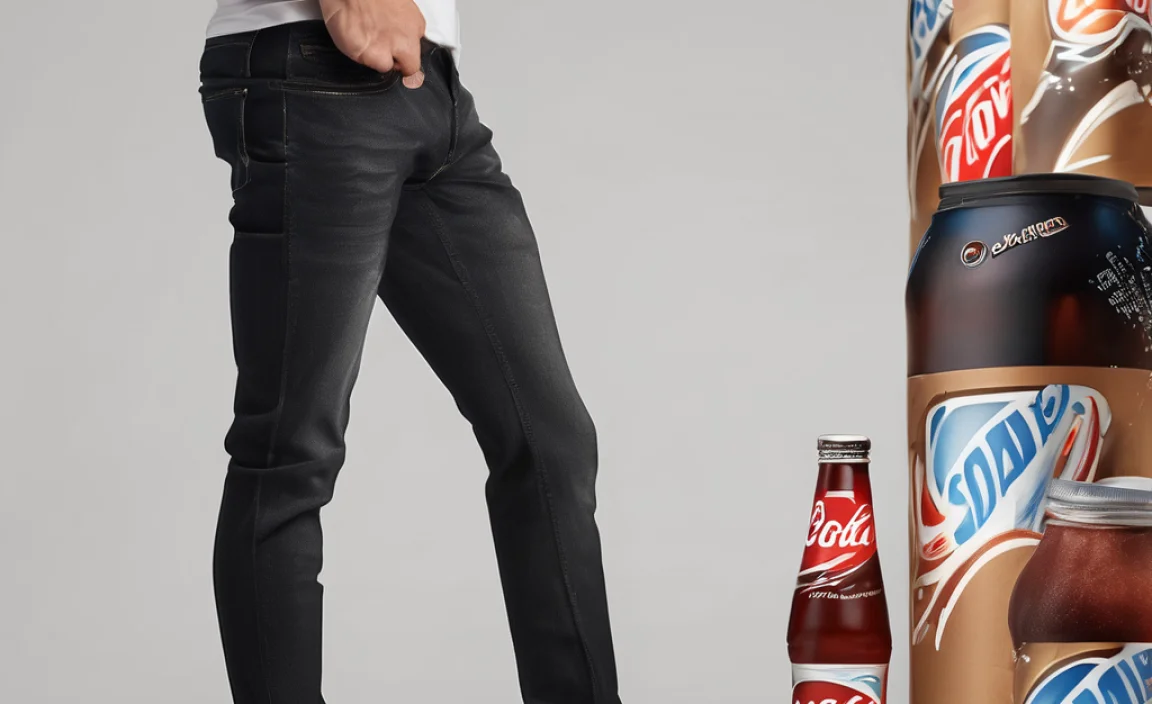
Effective stain removal relies on a few key principles: breaking down the stain, lifting it from the fabric, and rinsing it away. Sugars found in soda are water-soluble, meaning water is your first and best ally. Detergents, particularly those designed to cut through grease and oil, can help break down the sticky nature of the sugar and any emulsified oils from the soda itself. Sometimes, a mild acidic or alkaline solution can also help neutralize and lift certain types of stains, but for soda, gentleness is often key to preserving the black dye.
For persistent stains, understanding the properties of the stain and the fabric is crucial. According to the Scientific American, detergents work by surrounding stain particles and lifting them into the wash water. This process is enhanced by agitation and the right water temperature. For black jeans, cooler water is generally recommended to prevent color loss, and gentle fabrics are best handled with mild solutions.
Immediate Action: The First Few Minutes
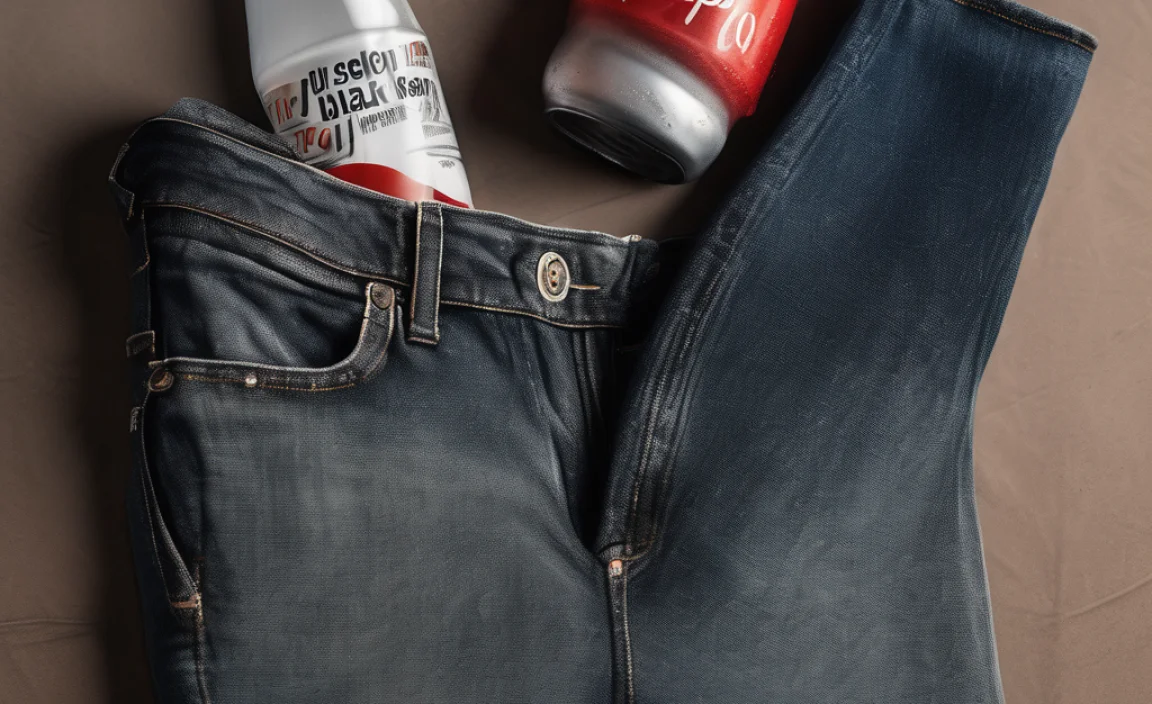
The absolute best time to tackle a soda stain is the moment it happens. The longer soda sits on your jeans, the more it has a chance to set into the fibers, making it harder to remove. Swift action can often prevent the stain from becoming a permanent problem.
Step 1: Blot, Don’t Rub!
As soon as the spill occurs, grab a clean, dry cloth or paper towel. Gently blot the affected area. The goal here is to soak up as much of the liquid soda as possible without spreading it further or pushing it deeper into the fabric. Rubbing, unfortunately, can grind the stain into the fibers and potentially damage the denim.
Step 2: Rinse with Cold Water
Once you’ve blotted up the excess soda, head to a sink. Turn your jeans inside out and flush the stained area with cold running water. Aim the water from the back of the stain, pushing it out of the fabric. Cold water is preferred because hot water can sometimes set sugar-based stains, making them harder to remove.
Pre-Treating the Stain: Gentle but Effective Methods
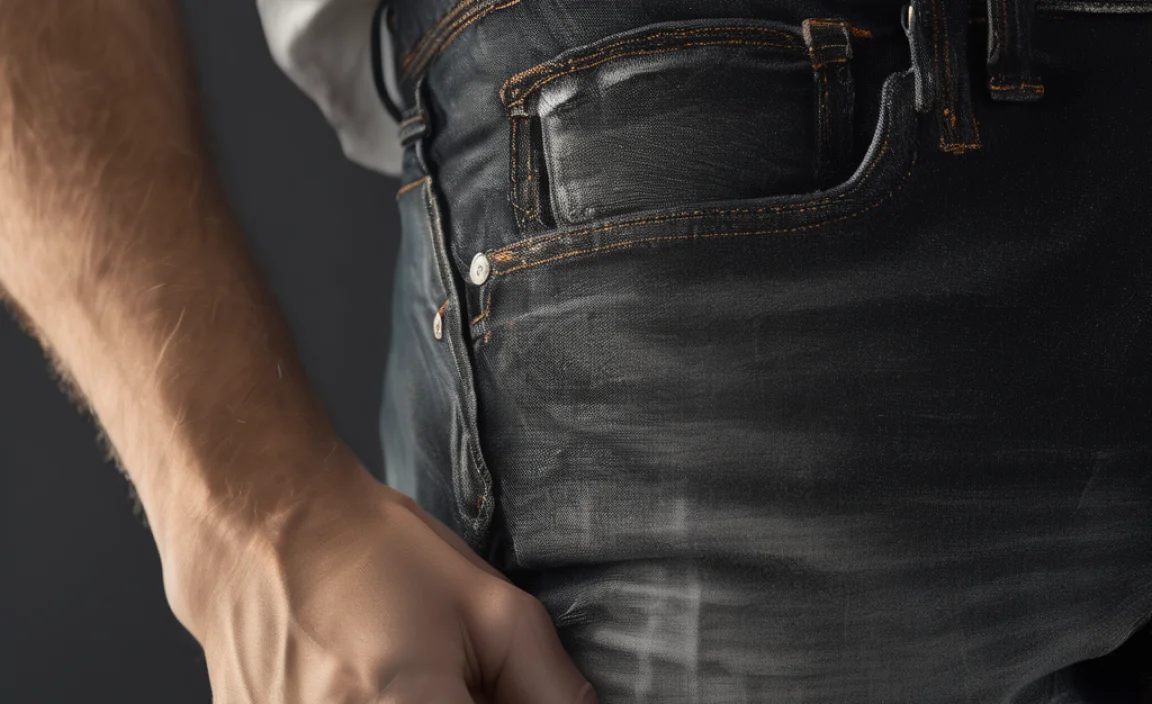
If you’ve managed to rinse the stain fairly quickly, you might be able to proceed directly to washing. However, for most soda spills, a pre-treatment step will significantly increase your chances of complete stain removal. Here are a few powerful yet gentle methods:
Method 1: Dish Soap and Water
This is often the most effective and readily available solution for soda stains on black jeans. Dish soap is designed to break down grease and stickiness, which is exactly what soda leaves behind.
What You’ll Need:
- Mild liquid dish soap (e.g., Dawn, Palmolive)
- Cool water
- Clean cloths or sponges
Steps:
- Mix a few drops of mild dish soap with about a cup of cool water.
- Dip a clean cloth or sponge into the solution.
- Gently dab the stained area with the soapy cloth. Work from the outside of the stain inward to prevent spreading.
- Let the solution sit on the stain for about 5-10 minutes.
- Rinse the area thoroughly with cool water.
Method 2: White Vinegar Solution
White vinegar is a mild acid that can help break down certain types of stains and neutralize odors. It’s generally safe for dark fabrics when diluted.
What You’ll Need:
- White vinegar
- Cool water
- Clean cloths
Steps:
- Mix equal parts white vinegar and cool water in a bowl.
- Dampen a clean cloth with the vinegar solution.
- Gently blot the soda stain with the cloth.
- Allow it to sit for about 5 minutes.
- Rinse the area thoroughly with cool water.
Method 3: Baking Soda Paste (Use with Caution)
Baking soda is a mild abrasive and can help lift stains. However, use this method cautiously on black jeans, as excessive scrubbing can sometimes cause slight fading. It’s better for lighter colored sodas or if other methods aren’t working.
What You’ll Need:
- Baking soda
- Water
- Soft cloth or toothbrush
Steps:
- Create a paste by mixing baking soda with a small amount of water.
- Gently apply the paste to the stain.
- Let it sit for 5-10 minutes.
- Gently brush off the dried paste with a soft cloth or a very soft toothbrush.
- Rinse the area thoroughly with cool water.
Washing Your Black Jeans After Pre-Treatment
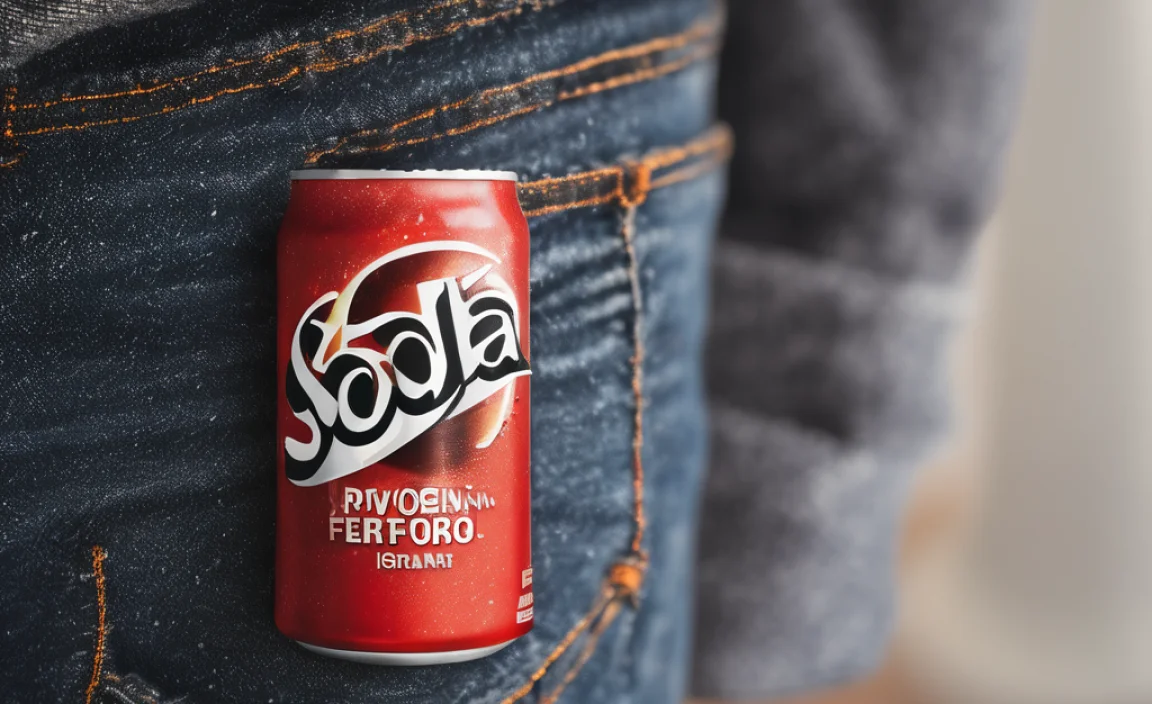
Once you’ve pre-treated the stain and rinsed the area, it’s time to wash your black jeans. Proper washing techniques will help ensure the stain is fully removed and prevent any damage to the color or fabric.
Essential Washing Tips:
- Check the Care Label: Always refer to your jeans’ care label for specific washing instructions.
- Wash Inside Out: This protects the outer surface of your jeans, helping to preserve the color and prevent abrasion from other items in the wash.
- Use Cold Water: Cold or cool water is best for washing dark clothing to prevent shrinkage and color bleeding.
- Mild Detergent: Opt for a detergent designed for dark colors or a general mild detergent. Avoid detergents with bleach or optical brighteners, which can fade black denim.
- Gentle Cycle: A gentle wash cycle puts less stress on the fabric.
- Wash Separately or with Similar Colors: To avoid color transfer, wash black jeans with other dark items.
Sample Washing Machine Settings:
Here’s a common setup that works well for most black jeans:
| Setting | Recommendation |
|---|---|
| Water Temperature | Cold |
| Cycle Type | Delicate or Gentle |
| Detergent Type | Liquid, Color-Safe for Darks |
| Load Size | Small to Medium |
Drying Your Jeans: Important Considerations
How you dry your black jeans is just as crucial as how you wash them. The heat from a dryer can often set any remaining remnants of a stain, making it permanent. Air drying is typically the best option.
Air Drying is King:
- After washing, gently shake out your jeans to remove excess water and help them keep their shape.
- Lay them flat on a clean surface or hang them on a clothesline or hanger.
- If hanging, turn them inside out or hang them by the waistband to avoid creases.
- Avoid direct sunlight, as prolonged exposure to strong sunlight can cause black fabric to fade.
Using a Dryer (with Caution):
If you must use a dryer:
- Use the lowest heat setting possible (air fluff or tumble dry low).
- Remove the jeans while they are still slightly damp and let them air dry the rest of the way to minimize heat exposure.
- Check the stain before putting them in the dryer. If any trace remains, repeat the pre-treatment and washing steps.
Tackling Stubborn or Set-In Soda Stains
So, what if you discover the soda spill hours or even days later? Set-in stains require a bit more patience and potentially a combination of methods. The key is not to give up after the first try and to avoid heat.
Step 1: Re-Evaluate and Re-Treat
If the stain is still visible after the first wash, do not dry your jeans. Remove them from the dryer (if you used one) and assess the situation. You’ll need to re-treat the stain.
Step 2: Longer Soaking Might Be Needed
For tougher stains, you might need to let the pre-treatment solution work for a longer period. Try soaking the affected area in a soak made of cold water and a bit more dish soap or the vinegar solution for 30 minutes to an hour, or even overnight.
Step 3: Consider a Laundry Booster
For very stubborn stains, you can try a laundry booster specifically designed for colors. Products like OxiClean (ensure it’s color-safe) can be effective when used as a soak. Follow the product instructions carefully and always test on an inconspicuous area of your jeans first (like the inside hem) to ensure it doesn’t affect the black dye.
According to the Colorado State University Extension, repeated treatments are often necessary for stubborn stains. They emphasize that patience and persistence are key, and avoiding heat until the stain is completely gone is critical.
Method 4: Hydrogen Peroxide (Use with Extreme Caution)
Hydrogen peroxide is a mild bleaching agent. While it can be effective on some stains, it carries a significant risk of lightening or bleaching black fabric. If you choose to try this, use it as a last resort and dilute it significantly (e.g., 1 part peroxide to 4 parts water). Apply only to the stain, let it sit for a very short time (1–2 minutes), then rinse thoroughly and wash immediately.
Important Note: Always test any treatment on an inside seam or hem first. If you see any color change, do not proceed with that method on the visible stain.
Choosing the Right Tools for the Job
Having the right supplies on hand can make a big difference when tackling stains. Here’s a quick rundown of the essential tools:
| Tool | Purpose | Notes |
|---|---|---|
| Clean White Cloths/Paper Towels | Blotting, applying solutions | White material won’t transfer dye |
| Mild Liquid Dish Soap | Breaks down sugar and stickiness | Gentle detergents are best |
| White Vinegar | Mild acid for stain breakdown | Dilute with water |
| Baking Soda | Mild abrasive, lifting agent | Use gently on black denim |
| Cool Water | Rinsing, diluting solutions | Crucial for not setting stains |
| Soft Toothbrush/Cloth | Gentle scrubbing (if needed) | Avoid stiff bristles |
Preventing Future Soda Spills
While you can’t always prevent spills, you can take steps to minimize the likelihood:
- Use a Straw: Especially with fizzy drinks, a straw can help control consumption and reduce the risk of splashes.
- Be Mindful While Drinking: Take your time and sip rather than gulping quickly.
- Secure Lids on Bottles/Cans: Make sure all beverages are properly sealed when not actively being consumed.
- Keep a Stain-Removing Pen Handy: For on-the-go emergencies, a portable stain remover pen can be a lifesaver.
Frequently Asked Questions (FAQ)
Q1: How quickly do I need to treat a soda stain on black jeans?
A: The sooner, the better! Treating a soda stain within minutes of it happening significantly increases your chances of removing it completely.
Q2: Can I use hot water to rinse soda from black jeans?
A: No, it’s best to use cold water. Hot water can set sugar-based stains and potentially cause dark fabrics to fade.
Q3: Will dish soap fade my black jeans?
A: Mild liquid dish soap, when used as a pre-treatment and rinsed thoroughly, is generally safe for black denim. Avoid harsh detergents.
Q4: What if the stain is still there after washing?
A: Do not put the jeans in the dryer. Re-treat the stain using one of the methods described and wash again. Multiple treatments may be necessary.
Q5: Can I use bleach on my black jeans to remove a soda stain?
A: Absolutely not. Chlorine bleach will permanently damage the black dye and likely leave a noticeable spot or discoloration.
Q6: Is it safe to use a dryer sheet on black jeans?
A: Dryer sheets are generally fine for tumbling, but they don’t affect stain removal. If you have a residual stain, heat from the dryer (even with a dryer sheet) can set it. Air drying is always the safest bet if you’re unsure about stain removal.
Conclusion
Dealing with soda spills on black jeans might seem like a fashion emergency, but as you can see, it’s a situation that can be managed effectively with the right knowledge and a few simple steps. By acting quickly, blotting instead of rubbing, and utilizing gentle, household cleaning solutions like dish soap and cool water, you can preserve the integrity and color of your favorite denim. Remember to always check care labels, wash in cold water, and air dry to prevent stains from setting.
Don’t let a spilled soda ruin your day or your favorite pair of jeans. With this guide, you’re equipped to handle the situation confidently. You now have proven, effortless methods at your fingertips to ensure your black jeans remain looking sharp and stain-free. Happy cleaning!


